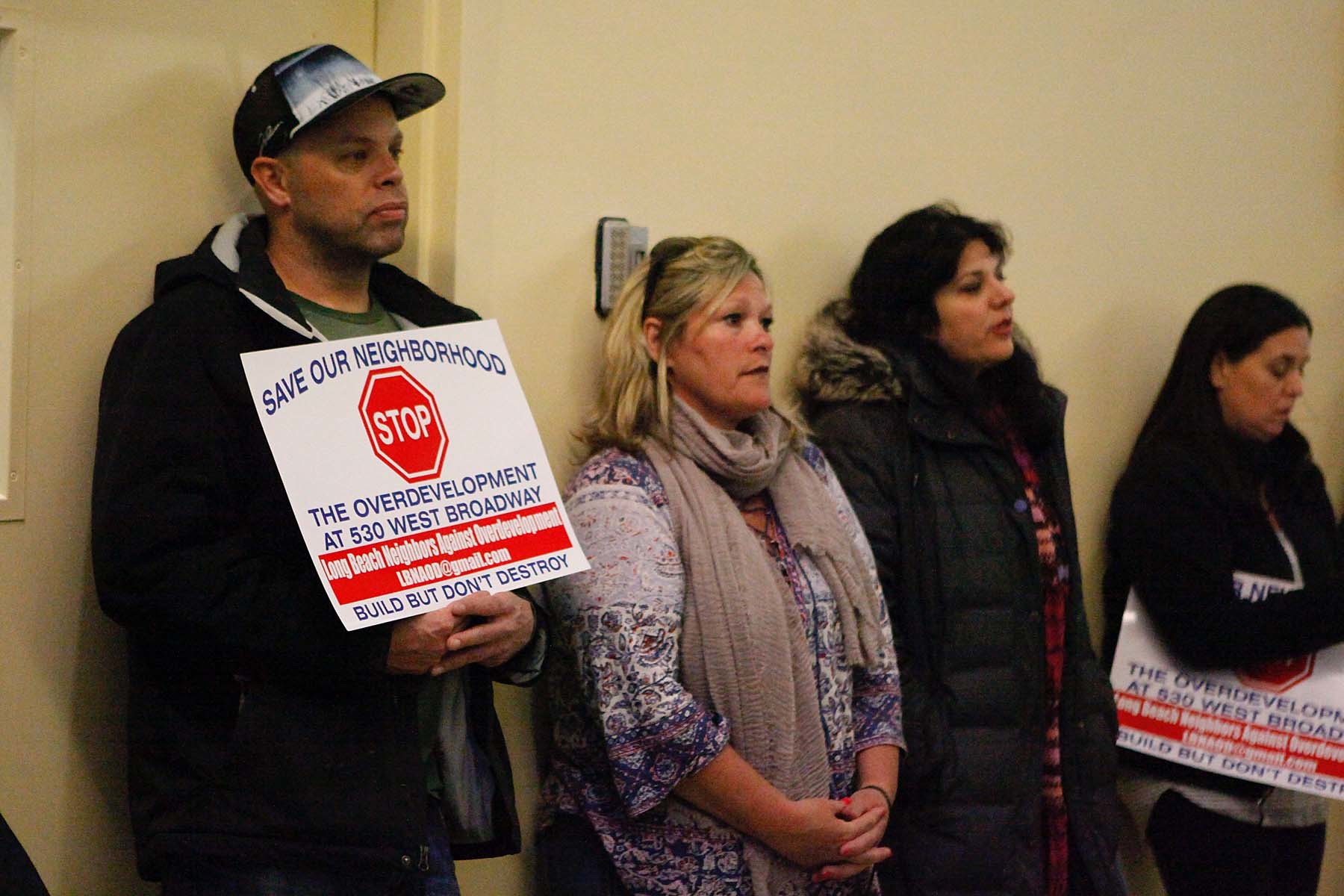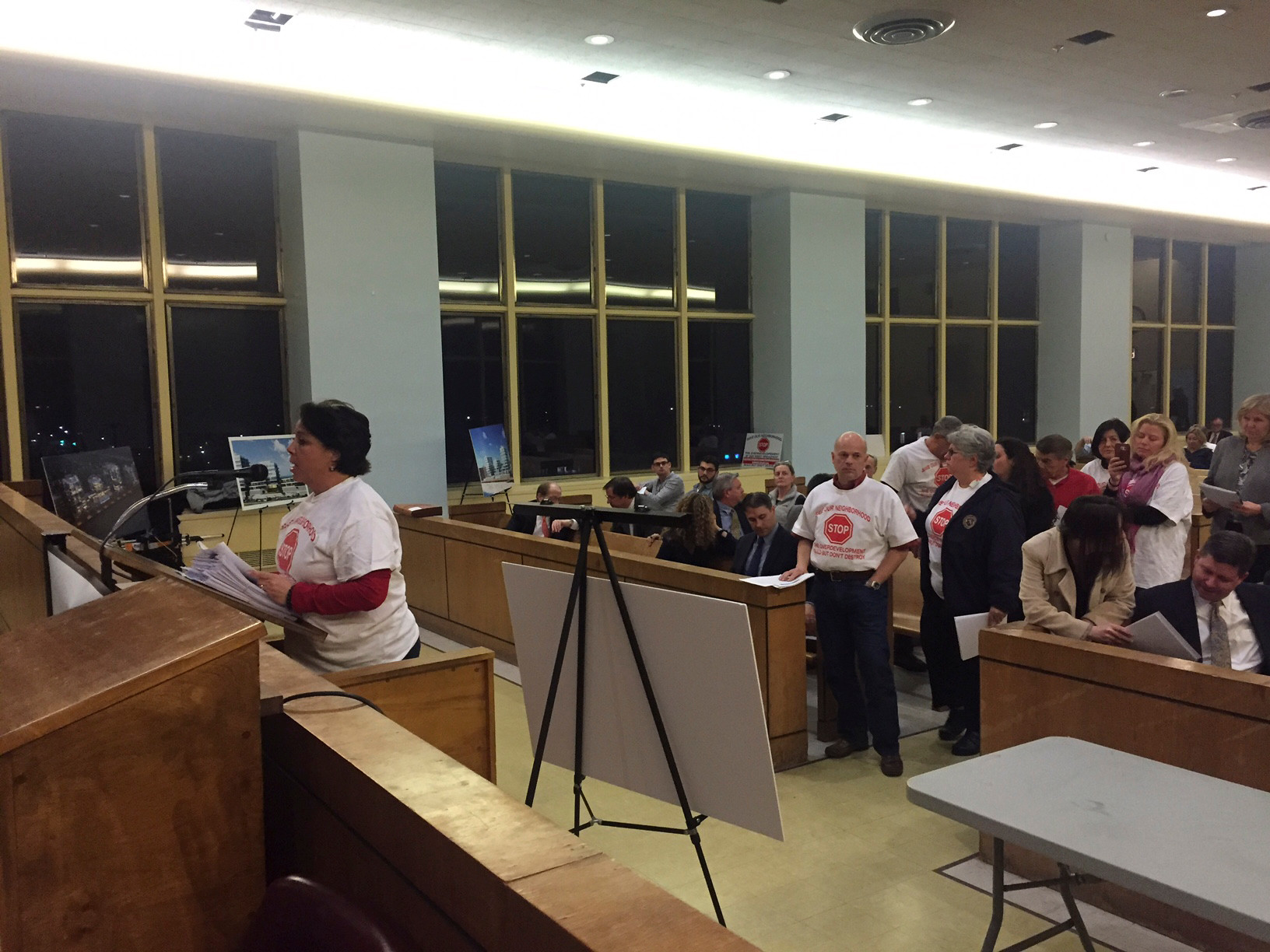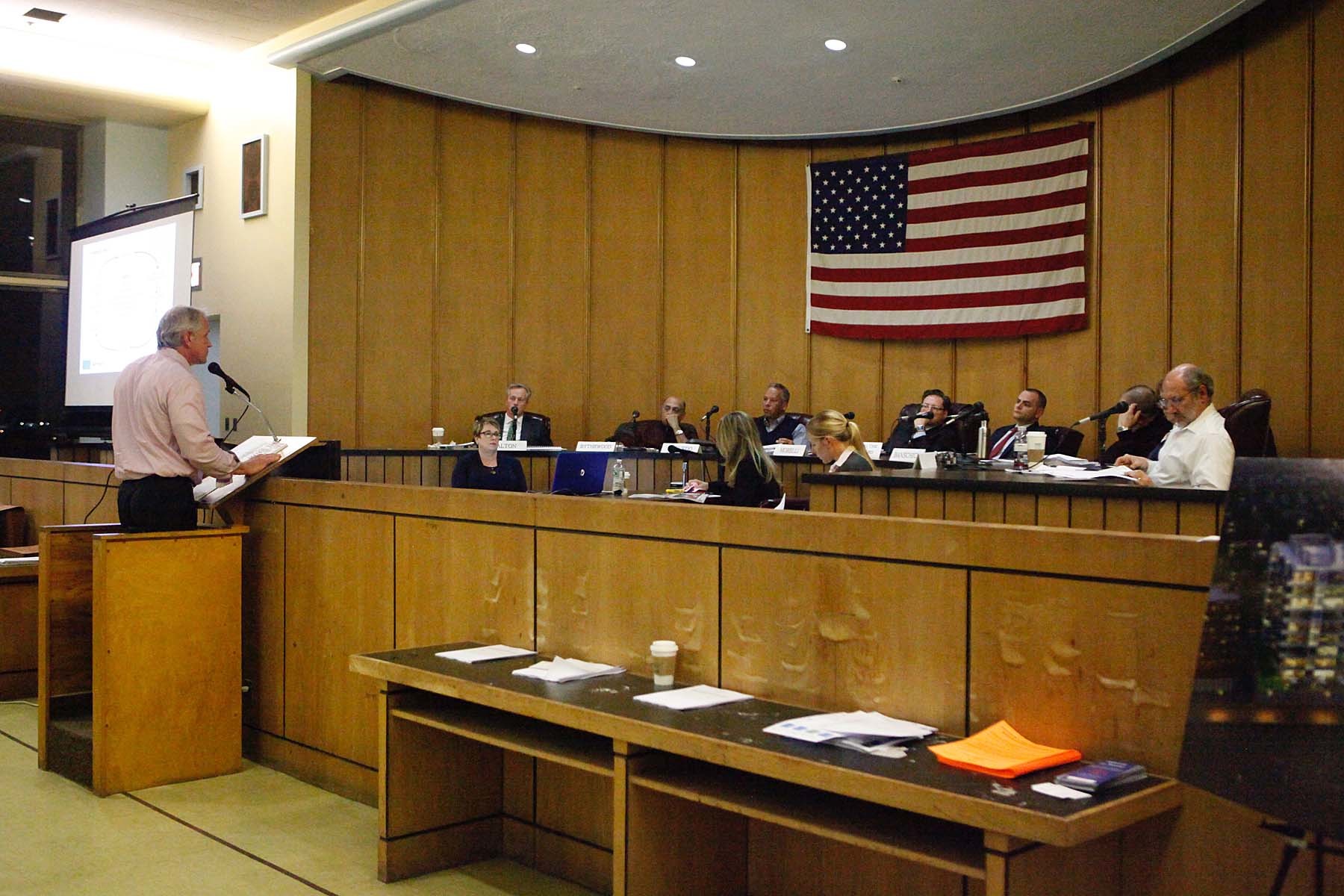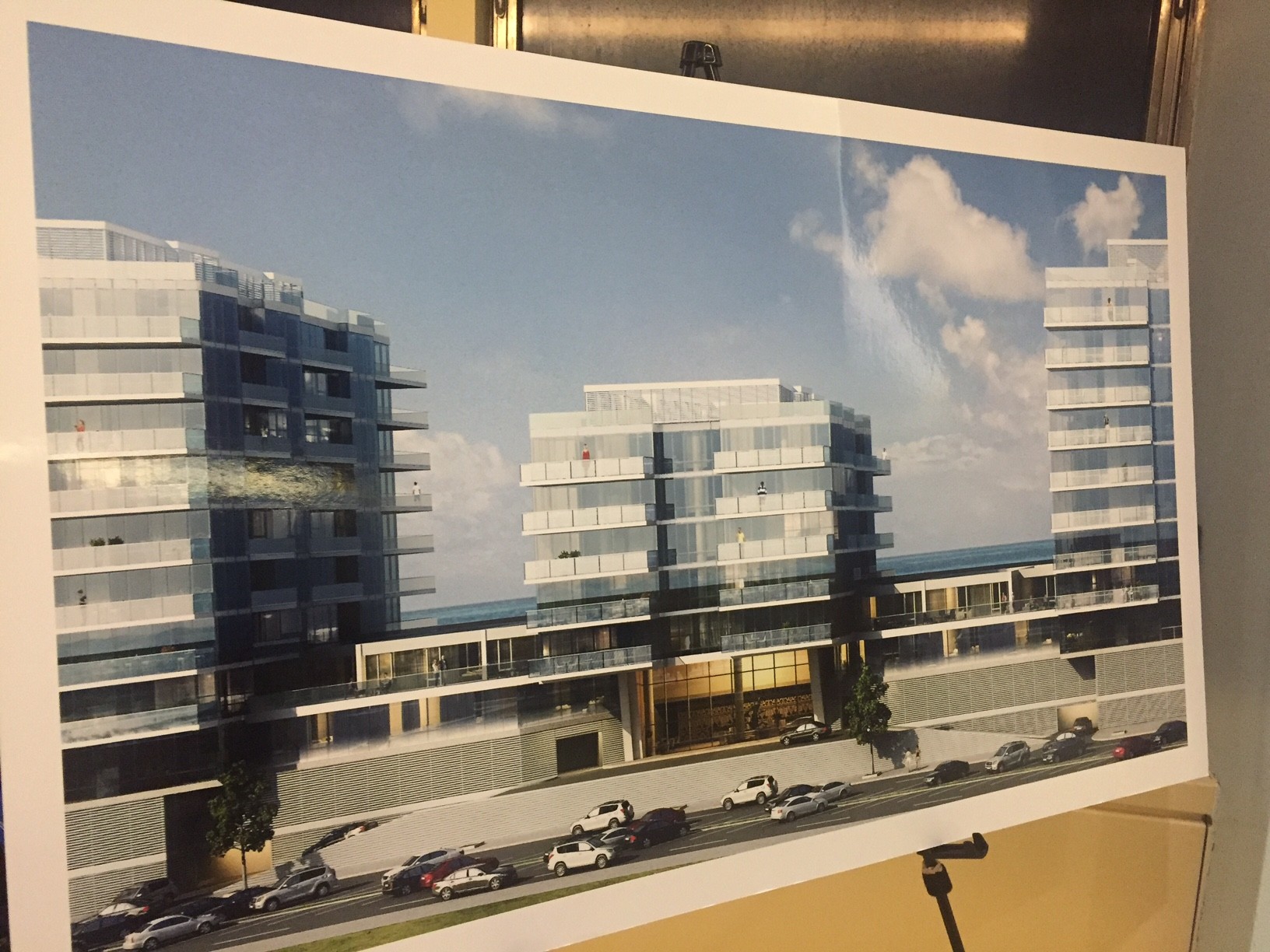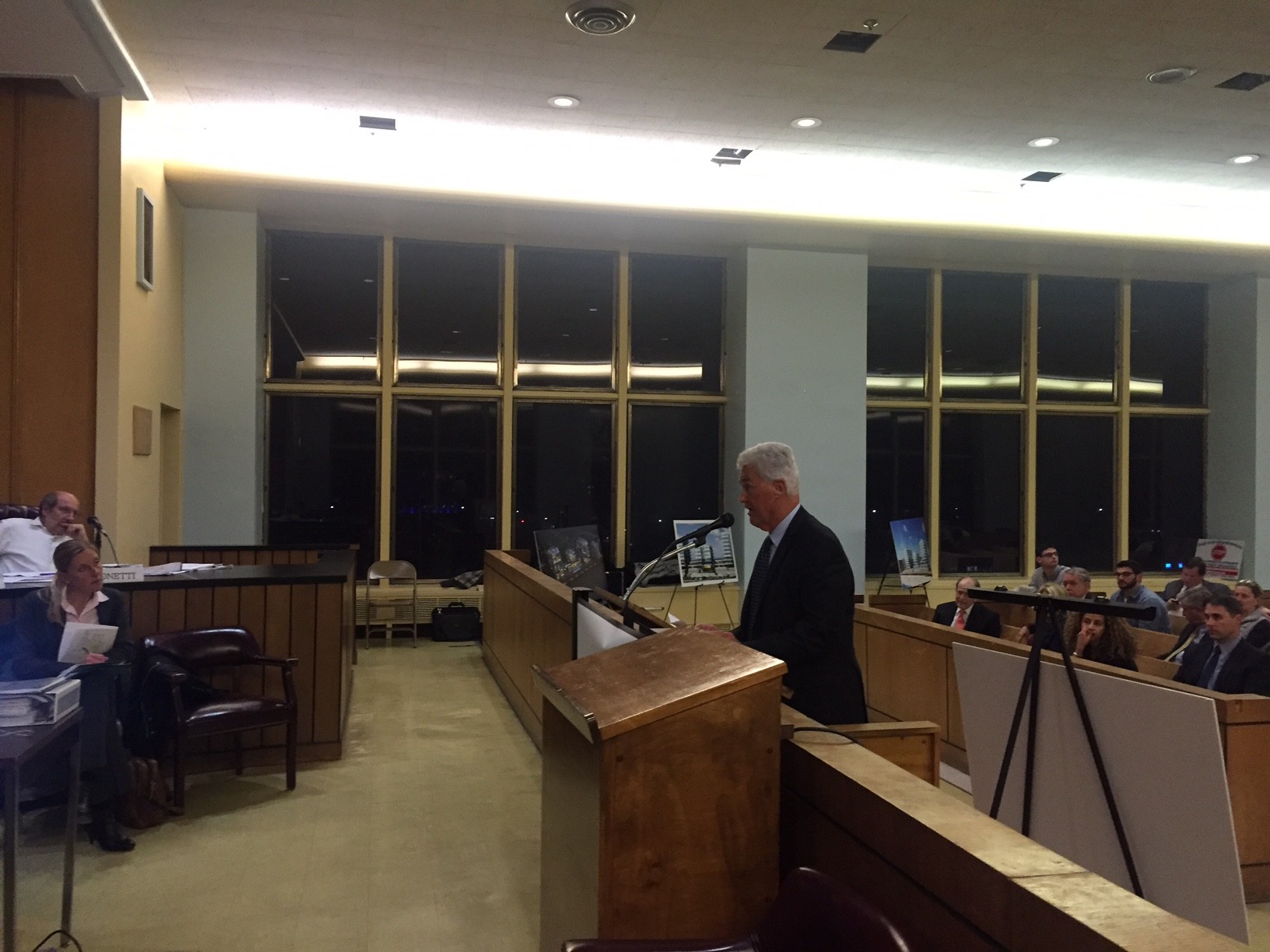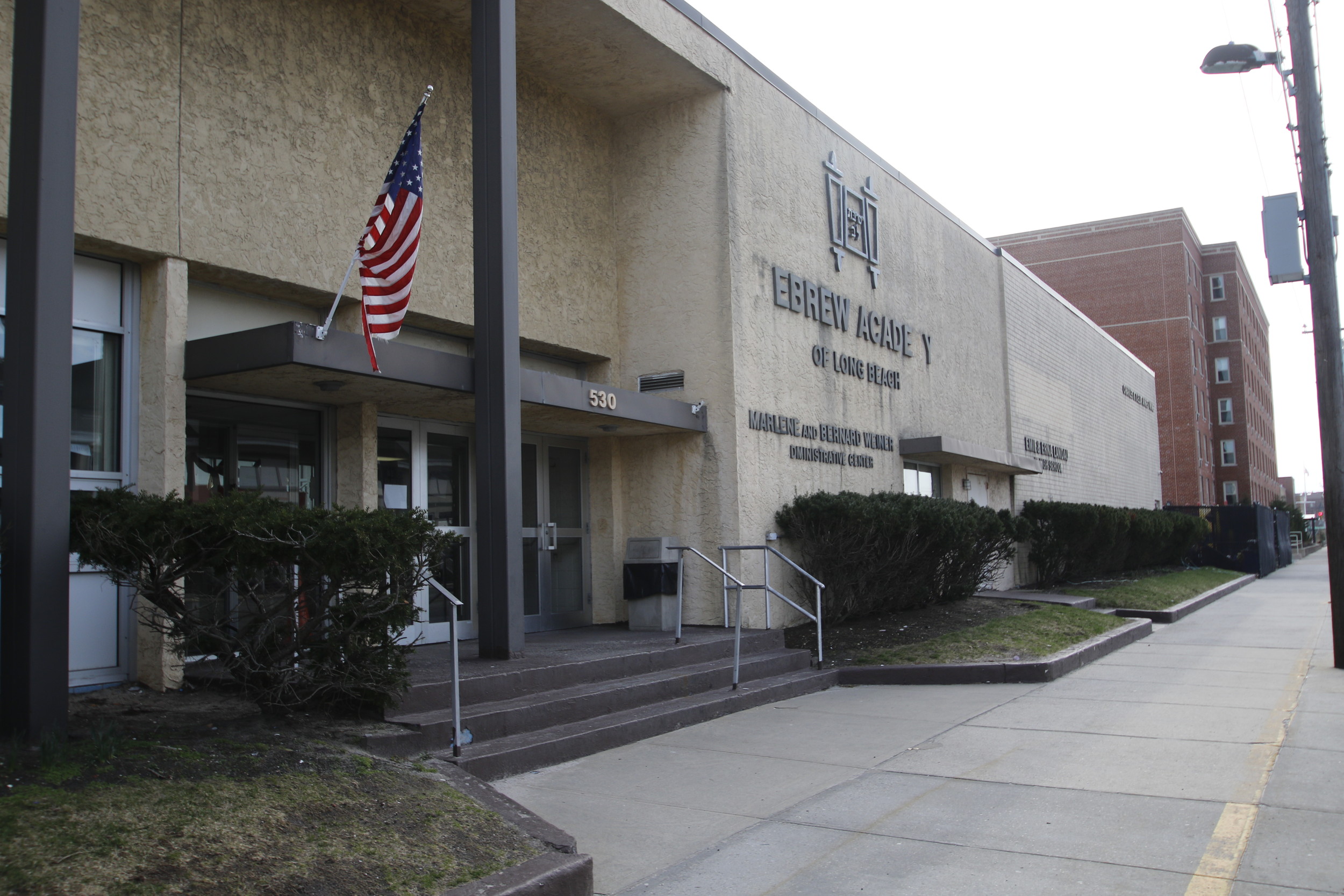Friday, April 19, 2024
 44.0°,
Mostly Cloudy
44.0°,
Mostly Cloudy
Residents blast Long Beach condo project
Developers, residents debate proposed plan for HALB site at marathon meeting
The developer looking to build luxury condos on the former Hebrew Academy of Long Beach property said that residents’ fears of overdevelopment are misguided.
Former State Assemblyman Jerry Kremer, an attorney representing the developer, 73rd Meridian Partners LLC, told the zoning board last week that there are only three of four vacant parcels remaining in the city that can support such developments, including the Superblock and the Foundation Block.
“There seems to be a hyper-fixation here on the concept of overdevelopment, which we think … is something of a myth,” developer Kurt Wittek told the board.
Kremer said that the project would not be out of character with the community, citing nearby buildings on Broadway, such as the 64-foot-tall Beachwalk Landing condominiums and the seven- and eight-story Seaview Terrace and Lafayette Terrace co-op buildings.
He added that between 1990 and 2009, the city issued permits for only four large-scale buildings with a total of 215 units, including the Aqua and the White Sands. Since 2010, the city has issued no building permits for large multi-family projects, Kremer said.
“There is no threat that this building would start a rush to build,” he said. “There’s no great line of developers seeking to come to Long Beach.”
But many residents and local officials disagreed, and said that many of their concerns were ignored during meetings with the developer.
The row of high-rise buildings built in the 1960s on East Broadway and Shore Road, which became known to many as the “Chinese wall,” blocked views of the ocean and created challenges for firefighters at a time when building fires were routine.
The buildings were so tall and dense, residents and former officials said, that they inspired a number of zoning changes in 1987 to curb overdevelopment and ensure that the “mistakes of the past were not repeated,” according to Ed Eaton, a three-time city manager who served for 25 years.
Unlike the HALB property, buildings such as the Aqua, on East Broadway, were constructed where blighted buildings once stood. Additionally, high-rises near HALB were built before zoning code changes were enacted or in areas that were zoned for such development.
“The zoning ordinance of 1987 was not arbitrary and capricious,” Eaton said. “Throughout the 1960s and ’70s, development in certain areas of the community ran amok. In my opinion, the proposal before you is a mistake of gigantic proportions.” —Anthony Rifilato
Hundreds of residents packed City Hall for a Zoning Board of Appeals hearing last week to speak out against a developer’s revised plan to build luxury condominiums on the former Hebrew Academy of Long Beach property. The vocal attendees included Nassau County Legislator Denise Ford, former City Managers Ed Eaton and Glen Spiritis and a representative of State Sen. Todd Kaminsky.
The March 30 special hearing lasted over six hours and ended after 1 a.m. Residents, including those who live near the property, at 530 W. Broadway, waited several hours to voice their concerns about how the neighborhood would be affected by the project, saying that it would block ocean views, impact parking and traffic, and reduce property values.
There is a growing movement against overdevelopment in town, and residents said that the project was out of character for the Westholme and nearby Walks neighborhoods — tight-knit communities made up of mostly one- and two-family homes — and would stress the city’s aging infrastructure and the already overburdened Lloyd Aquifer.
“The three condo towers are still too tall and dense, and would change the character of this neighborhood in undesirable ways,” Kaminsky said in a statement to the board.
Ford also criticized the project, and urged the developers to go “back to the table.”
Former State Assemblyman Harvey Weisenberg did not speak for or against the project, but urged the board to listen to residents' concerns.
Wittek Development LLC and Sackman Enterprises — which filed a variance request with the zoning board under the name 73rd Meridian Partners LLC — are looking to build two nine-story, 120-foot-tall structures. If approved, the towers would be the tallest in Long Beach.
The project would also include a six-story, 85-foot-tall building in the center of the property, connected by townhouses between the towers, for a total of 126 units. The buildings would sit above a Federal Emergency Management Agency-mandated two-level parking garage with 294 spaces — 30 percent more than required.
Though the property is in a residential zone, the city’s Building Department issued a denial to the developers in January, saying that the project violated a number of zoning codes, including the neighborhood’s 40-foot height limit and the building area, side yards and density.
73rd Meridian Partners is seeking variances in all four categories, though residents and elected officials alike said that the project is too large for a property that measures less than two acres and too tall for a residential zone. Residents said that the structure would cast shadows over nearby homes and create a “wall” along the boardwalk.
“This would be like taking two Beachwalk Landings and stacking them on top of one another,” said Charles Peknic, an attorney representing Long Beach Neighbors Against Overdevelopment, a group that opposes the project, referring to a nearby seven-story building. “This will clearly have an effect on views — the shadow that’s going to be cast will be dramatic.”
Residents said they would support a development that fit the character of the neighborhood.
“The rationale behind seeking these variances is profit,” Peknic said. “This property is meant for what the zoning code says it’s meant for. It can be developed in some other minimal way.”
Another ‘Chinese wall’?
Developers have said that keeping the project within the limits of the current zoning code would not be financially viable. The proposed beachfront condos would sell in less than a year for an average of $1.4 million, the developers said, and the project would attract empty-nesters and young professionals.
HALB recently relocated to Woodmere, and 73rd Meridian is in contract to purchase the tax-exempt property.
Unlike iStar — the developer that was denied a request for a 20-year tax break last year to build luxury apartment buildings on the Superblock — attorneys and experts for 73rd Meridian emphasized that it is not seeking any tax incentives. The project, they said, would generate $3 million in property taxes per year, and tenants would visit local businesses.
“One of the objections raised about this building is that, in effect, it would create a Chinese wall,” said Jerry Kremer, a former state assemblyman and former Long Beach resident who is counsel to Ruskin Moscou Faltischek, the Uniondale-based law firm representing the developer.
Kremer was referring to the row of high-rise buildings that were built on East Broadway and Shore Road beginning in the 1960s.
“As you examine the configuration of this building,” he continued, “you will note there is ample space between the three structures that are proposed, and nothing that resembles the so-called Chinese wall concept.” (Full disclosure: Kremer is a Herald columnist.)
The developers were initially seeking to build two 15-story structures, but twice scaled back the project after meetings with local civic groups, and made other concessions, such as adding more parking and not including retail space along the boardwalk.
“We’re sitting on a tax exempt property that should be utilized,” Kremer said.
Developer Kurt Wittek said that the project would be a state-of-the-art and environmentally responsible development with view corridors between the buildings to maximize light and air. “We wanted to infuse this physical structure and development with some soul, some heart, a sense of place that would stand as something unique and significant in this community that would be a positive addition,” he said. “Contrary to popular belief, it’s not an exercise in cramming as many units onto a property as you can to maximize your profit.”
Residents question the benefits
Experts appearing on behalf of the developer presented environmental, traffic and other studies that they said concluded that the project would not have a negative impact on the community. There would be less traffic congestion than the school created, they said, and only “minimal” traffic at intersections on weekends, and parking in the area would improve.
But members of the zoning board — who are still gathering public feedback and not expected to vote on the proposal anytime soon — said they found it hard to believe that the condos would have no effect on local emergency services, traffic and infrastructure. The city recently hired a consultant to review that potential impact, to be paid for by the developer.
“It sounds like a lot more demand,” said board Chairman Rocco Morelli. “What is it going to cost the city in additional services to support the project?”
Residents criticized the developer for not disclosing those costs or how much it paid for the property. Others questioned the estimated tax revenue.
“What are you asking us now to spend?” Morelli said. “I’m looking at half the information that I want to see. I think the board has a right to know what the cost of construction is going to be, what the proposed profit margin is going to be. The project could be something that, although beautiful, may not really sell.”
At one point, residents scoffed when a real estate appraiser for the developer suggested that the city raise taxes to pay for infrastructure repairs.
One resident said that her home nearby has been on the market for nearly a year, and that potential buyers lose interest when they are told about the project.
Dina Fiore, a member of Long Beach Neighbors Against Overdevelopment, who lives at the adjacent Seaview Terrace, presented the board with a Change.org petition with more than 1,000 signatures opposing the project. “This project is completely and totally out of character,” Fiore said. “It could be setting precedents like we’ve never seen before.”
Developer, residents disagree about overdevelopment
The developer said that residents’ fears of overdevelopment are misguided.
Kremer told the zoning board that there are only three of four vacant parcels remaining in the city that can support such developments, including the Superblock and the Foundation Block.
“There seems to be a hyper-fixation here on the concept of overdevelopment, which we think … is something of a myth,” Wittek told the board.
Kremer said that the project would not be out of character with the community, citing nearby buildings on Broadway, such as the 64-foot-tall Beachwalk Landing condominiums and the seven- and eight-story Seaview Terrace and Lafayette Terrace co-op buildings.
He added that between 1990 and 2009, the city issued permits for only four large-scale buildings with a total of 215 units, including the Aqua and the White Sands. Since 2010, the city has issued no building permits for large multi-family projects, Kremer said.
“There is no threat that this building would start a rush to build,” he said. “There’s no great line of developers seeking to come to Long Beach.”
But many residents and local officials disagreed, and said that many of their concerns were ignored during meetings with the developer.
The row of high-rise buildings built in the 1960s on East Broadway and Shore Road, which became known to many as the “Chinese wall,” blocked views of the ocean and created challenges for firefighters at a time when building fires were routine.
The buildings were so tall and dense, residents and former officials said, that they inspired a number of zoning changes in 1987 to curb overdevelopment and ensure that the “mistakes of the past were not repeated,” according to Eaton, a three-time city manager who served for 25 years.
Unlike the HALB property, buildings such as the Aqua, on East Broadway, were constructed where blighted buildings once stood. Additionally, high-rises near HALB were built before zoning code changes were enacted or in areas that were zoned for such development.
“The zoning ordinance of 1987 was not arbitrary and capricious,” Eaton said. “Throughout the 1960s and ’70s, development in certain areas of the community ran amok. In my opinion, the proposal before you is a mistake of gigantic proportions.”
HELP SUPPORT LOCAL JOURNALISM
The worldwide pandemic has threatened many of the businesses you rely on every day, but don’t let it take away your source for local news. Now more than ever, we need your help to ensure nothing but the best in hyperlocal community journalism comes straight to you. Consider supporting the Herald with a small donation. It can be a one-time, or a monthly contribution, to help ensure we’re here through this crisis. To donate or for more information, click here.
Sponsored content
Other items that may interest you

